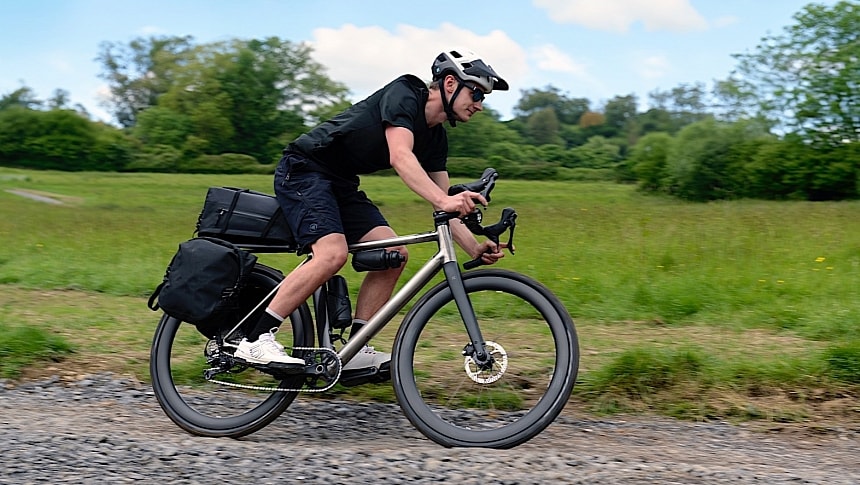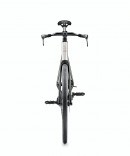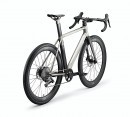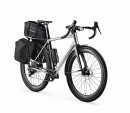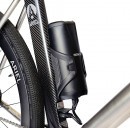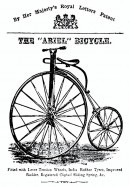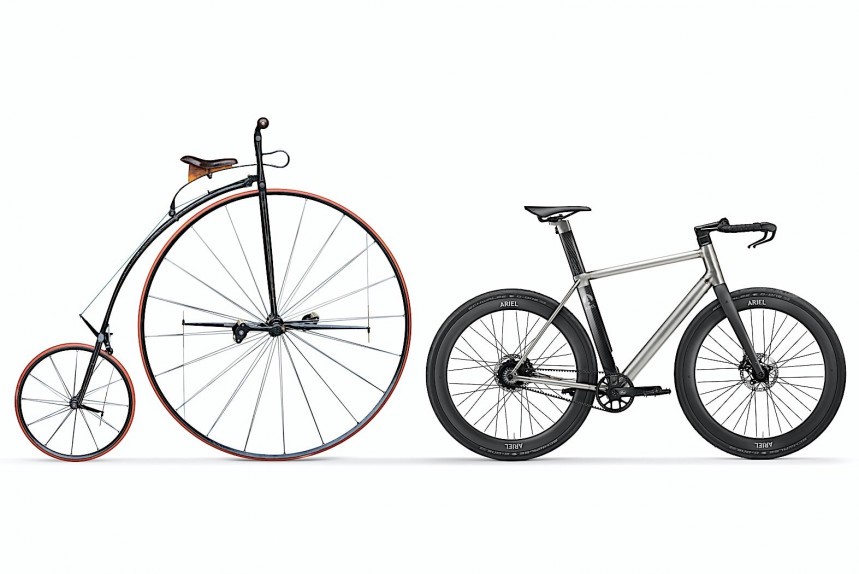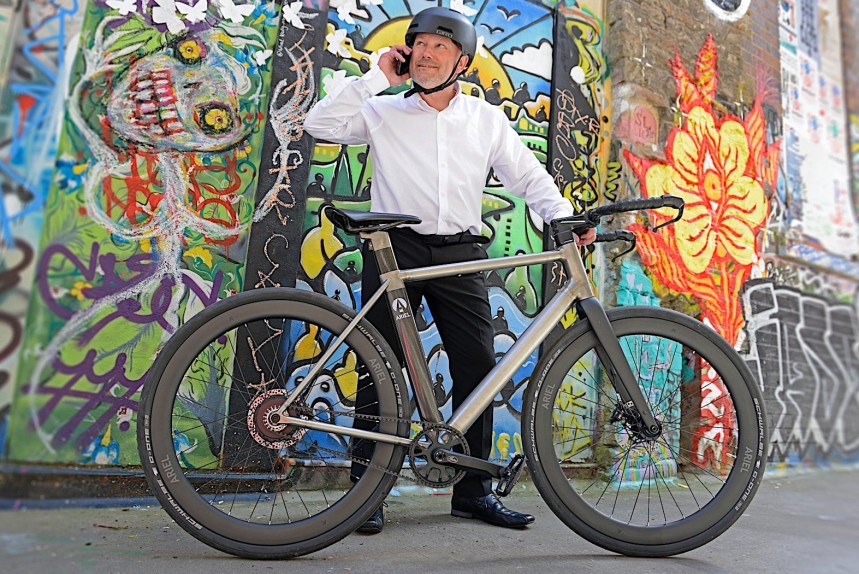There are names in the automotive industry that only appeal to certain kinds of customers. But even if their production is limited, and the market they target a niche one, these companies are still known the world over. Like Ariel, for instance.
The British brand is the one behind the road-legal, open-wheel Atom, or the equally exciting but more off-road-oriented Nomad. But as of this week, it will also be known as the maker of one of the most impressive (and not at all cheap) e-bikes around.
You see, before turning its business around and starting making cars, Ariel was in the business of manufacturing bicycles. It started doing that all the way in 1871, when it produced something called the Ariel Ordinary, a penny-farthing design that was all so common back then.
For the people of that time, the design was something truly extraordinary. Its front wheel was a massive 48 inch in diameter, featured tensioned wire spoked wheels that for the first time were shod in rubber tires, and was built around a lightweight hollow steel tube frame. Desipte its looks, the thing tipped the scales at 51 pounds (23 kg).
One of these things went on to set the hour speed record in 1873, traveling a total of 14 and a half miles (23.33 km) in sixty minutes at the Molineux Grounds in Wolverhampton. Twenty years later, another Ordinary contradicted its name and became a record holder again, traveling 32 and a half miles (52.3 km) in one hour.
The e-bike the Brits presented this week is a nod to that original Ordinary, and the first bicycle to come out Ariel's doors after 92 years. That's because in 1932 the company switched to making motorcycles, and put an end to human-powered two-wheelers.
An important moment for the company, then, and a perfect opportunity for us to take a closer look at the newest entry in the most competitive mobility segment around.
The new bike is called Ariel Dash, and it is the result of five years of R&D – or, at least, that's what we’re told. It's an end product that was "engineered to automotive and aerospace standards," as per the company making it.
The bike is built around a 3D printed titanium tube frame and uses carbon fiber forks. Because of this it weighs just 24 pounds (10.9 kg), and features an in-frame battery, with all the hoses and cables hidden from sight.
Ariel offers two versions of the bike, namely Urban and Adventure, and they share the 250W rear hub motors (a legal requirement for this kind of vehicle) and the 36-volt battery pack installed in the frame that also powers the LED lights of the bikes, eliminating the need for extra batteries.
What sets the two versions apart is the things they were meant to do, the frame geometry, drivetrain (both designs use Mahle hardware, but with different specification), and riding position.
The Dash Urban is a ride designed to be used in cities. It relies on the Mahle X35+ powertrain that delivers 40 Nm of torque, ran through a single-speed, Gates polymer toothed belt drive, and a downtube-hidden battery that should give it a maximum range of 45 miles (72 km). If a range extender is used, that distance can grow to as much as 80 miles (129 km).
The Dash Adventure, capable of providing 55 Nm of torque, is the one designed for more adventurous riders, blending road, trail, and gravel capabilities. The battery pack on this variant allows for a maximum range of 50 miles (80 km), or as much as 95 miles (153 km) with a range extender. The bike uses a 12-speed Shimano GRX gearset to get around.
As far as charging times are concerned, Ariel says taking the battery from 0 to 100 percent should take as little as 2.5 hours. The range extender available for the two models can be brought up to 80 percent in less than an hour. What's cool about it is that it can be connected to the bike through the same charge point.
Because this is 2024, the Dash models will be accompanied on the market by an app called My Smartbike. It can be run on both Android and iOS devices, and it can be used to control power delivery, display nav, and riding statistics.
Like all the vehicles Ariel makes, the Dash too will be made to order. Such level of attention also means the pricing is not for the weak of heart. Over in the UK, where the company is based, the Ariel Dash Urban can be had for £8,320, VAT not included.
At current exchange rates, that is about $10,600 (the Adventure is even more expensive, at $11,700), more than what many full-blown motorized two-wheelers go for. But hey, at least this bike is a nod to a 153-year-old penny-farthing.
You see, before turning its business around and starting making cars, Ariel was in the business of manufacturing bicycles. It started doing that all the way in 1871, when it produced something called the Ariel Ordinary, a penny-farthing design that was all so common back then.
For the people of that time, the design was something truly extraordinary. Its front wheel was a massive 48 inch in diameter, featured tensioned wire spoked wheels that for the first time were shod in rubber tires, and was built around a lightweight hollow steel tube frame. Desipte its looks, the thing tipped the scales at 51 pounds (23 kg).
One of these things went on to set the hour speed record in 1873, traveling a total of 14 and a half miles (23.33 km) in sixty minutes at the Molineux Grounds in Wolverhampton. Twenty years later, another Ordinary contradicted its name and became a record holder again, traveling 32 and a half miles (52.3 km) in one hour.
The e-bike the Brits presented this week is a nod to that original Ordinary, and the first bicycle to come out Ariel's doors after 92 years. That's because in 1932 the company switched to making motorcycles, and put an end to human-powered two-wheelers.
The new bike is called Ariel Dash, and it is the result of five years of R&D – or, at least, that's what we’re told. It's an end product that was "engineered to automotive and aerospace standards," as per the company making it.
The bike is built around a 3D printed titanium tube frame and uses carbon fiber forks. Because of this it weighs just 24 pounds (10.9 kg), and features an in-frame battery, with all the hoses and cables hidden from sight.
Ariel offers two versions of the bike, namely Urban and Adventure, and they share the 250W rear hub motors (a legal requirement for this kind of vehicle) and the 36-volt battery pack installed in the frame that also powers the LED lights of the bikes, eliminating the need for extra batteries.
What sets the two versions apart is the things they were meant to do, the frame geometry, drivetrain (both designs use Mahle hardware, but with different specification), and riding position.
The Dash Urban is a ride designed to be used in cities. It relies on the Mahle X35+ powertrain that delivers 40 Nm of torque, ran through a single-speed, Gates polymer toothed belt drive, and a downtube-hidden battery that should give it a maximum range of 45 miles (72 km). If a range extender is used, that distance can grow to as much as 80 miles (129 km).
As far as charging times are concerned, Ariel says taking the battery from 0 to 100 percent should take as little as 2.5 hours. The range extender available for the two models can be brought up to 80 percent in less than an hour. What's cool about it is that it can be connected to the bike through the same charge point.
Because this is 2024, the Dash models will be accompanied on the market by an app called My Smartbike. It can be run on both Android and iOS devices, and it can be used to control power delivery, display nav, and riding statistics.
Like all the vehicles Ariel makes, the Dash too will be made to order. Such level of attention also means the pricing is not for the weak of heart. Over in the UK, where the company is based, the Ariel Dash Urban can be had for £8,320, VAT not included.
At current exchange rates, that is about $10,600 (the Adventure is even more expensive, at $11,700), more than what many full-blown motorized two-wheelers go for. But hey, at least this bike is a nod to a 153-year-old penny-farthing.
